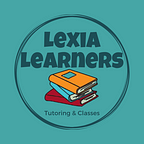The Five Types of Dysgraphia
Dyslexic Dysgraphia
With Dyslexic Dysgraphia a person’s spontaneously written work is illegible, copied work is pretty good, and spelling is bad. Finger tapping speed (a method for identifying fine motor problems) is normal. A Dyslexic Dysgraphic does not necessarily have Dyslexia. Dyslexia and Dysgraphia appear to be unrelated but often can occur together.
Motor Dysgraphia
Motor Dysgraphia is due to deficient fine motor skills, poor dexterity, poor muscle tone, and/or unspecified motor clumsiness. Generally, written work is poor to illegible, even if copied by sight from another document. Letter formation may be acceptable in very short samples of writing, but this requires extreme effort, an unreasonable amount of time to accomplish and cannot be sustained for a significant length of time. Writing is often slanted due to holding a pen or pencil incorrectly. Spelling skills are not impaired.
Spatial Dysgraphia
Spatial Dysgraphia is due to a defect in the understanding of space. This person has illegible spontaneously written work, illegible copied work, but normal spelling and normal finger tapping speed. Students with Spatial Dysgraphia often have trouble keeping their writing on the lines and difficulty with spacing between words.
Phonological Dysgraphia
Phonological Dysgraphia is characterized by writing and spelling disturbances in which the spelling of unfamiliar words, non-words, and phonetically irregular words is impaired. Individuals with Phonological Dysgraphia are also unable to hold phonemes in memory and blend them in their appropriate sequence to produce the target word.
Lexical Dysgraphia
Lexical Dysgraphia is evidenced when a person can spell but relies on standard sound-to-letter patterns with misspelling of irregular words. This is more common in languages such as English and French which are less phonetic than a language such as Spanish. This type of Dysgraphia is very rare in children. Some children may have more than one type of Dysgraphia. Symptoms, in actuality, may vary in presentation from what is listed here.
Dysgraphia and the US Public School System
It is often thought that continued handwriting practice will improve a Dysgraphic student’s ability to use paper and pencil alone as a useful tool to complete all their written schoolwork. In cases of Dysgraphia, “practice does not make perfect.” Also, as these students get older and written demands continue to increase each year, it is very common for these students to often write the minimum just to “get by” and their attitude about school and themselves can be negatively impacted to a significant degree.
